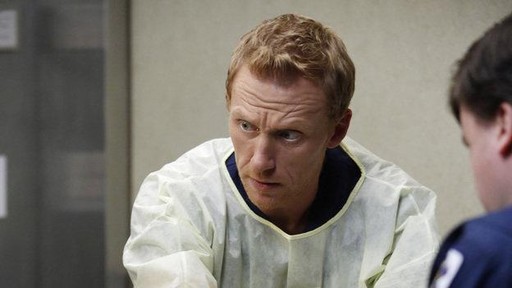
Bloodless Medicine
Nobody likes being told what to do…
Even if it's coming from an amazing actress like Constance Zimmer (She plays the "efficient" Alana Cahill). Not only has she recommended to shut down the ER at Seattle Grace Mercy West, but now she wants Dr. Webber to start repairing hernias differently? And put strange "Big Brother" cameras into the CCU that can see all, hear all, be all? AND put the place up for sale? What does that even mean for our awesome doctors?
Well, things might start to work differently around there. Besides that, I can't tell you anything more about it. What I CAN talk about is bloodless medicine…
Many people choose to not receive blood products or transfusions due to various reasons.
Cristina's patient, Rich Campion, was a Jehovah's Witness and therefore did not accept blood products on religious grounds. Their beliefs state that they should not receive the major components of blood such as plasma, red blood cells, white blood cells, and platelets. Choosing to accept the minor components of blood depends on the individual.
Other people elect to forego blood products due to certain medical risks. Even though extensive donor blood screening measures exist, many people still do not want to potentially expose themselves to any infection in the blood supply. Infections that may contaminate blood include: HIV, hepatitis, malaria, syphilis, cytomegalovirus, Herpesvirus, West Nile virus, Epstein-Barr virus, and Creutzfeldt-Jacob virus. Also, people want to decrease the possibility of receiving the wrong blood type – the body can have a serious and life-threatening reaction if given incompatible blood.
Lastly, due to the increase in screening factors, the blood donor pool has started to decline – too many individuals no longer can donate, causing the population's blood supply to dwindle. People may begin to benefit more and more (especially those with a rare blood type) from bloodless medicine techniques.
Unlike Rich Campion, some patients know in advance that they will be having a bloodless surgery and therefore their doctors can take some precautionary measures preoperatively.
The two most important strategies are to increase one's red blood cell count and to optimize the blood's ability to carry and deliver oxygen to the rest of the body. Synthetic chemicals can be administered preoperatively in order to boost the blood counts. Erythropoietin, a chemical primarily produced by the kidneys, can also be made in the laboratory and given to stimulate the body's bone marrow to make more red blood cells. Other chemicals, such as G-CSF and Interleukin-11, can be given in order to increase white blood cells and platelets.
And even though the procedure may sound counterintuitive, some patients purposefully have blood drawn before surgery and replaced with intravenous fluids. Called hemodilution, the idea is to "dilute" the blood, so that when lost during surgery, a lower concentration of red blood cells will be lost.
Special bloodless techniques have also been designed for use during the actual surgery.
As Cristina quickly realized, minimally invasive approaches are more ideal for reducing blood loss. Whether the surgeon chooses to use a catheter or smaller incision, either method greatly improves the chances of decreasing heavy bleeding. Additionally, specialized surgical instruments have been developed that are well-suited for bloodless surgery. Certain scalpels, such as the harmonic and microwave-coagulating scalpels, simultaneously cut tissue and seal off bleeding vessels. Depending on the particular area of surgery, experts continue to design specific tools that use different technology in order to reduce blood loss.
The anesthesiologist plays an important role in bloodless surgery as well. They will closely monitor and maintain the patient's body temperature; if it drops below normal levels, it may cause more blood to be lost as well as cause the body to use more oxygen. The doctors may also opt to try and keep the blood pressure as low as possible because it is a way to slow down blood loss. However, the team needs to be extra vigilant because an adequate blood pressure is still vital to ensure all of the organs and tissue can receive blood.
Despite the variety of methods, it is impossible prevent NO blood loss in surgery. In Rich's surgery, the team brought in a cell saver machine – these devices collect the blood lost by the patient and then "clean" it in order to return it to the patient to restore wavering blood levels.
After surgery, the medical team continues to use well-designed methods to treat the bloodless patient.
Most hospital patients endure blood tests twice a day, but experts have discovered that "microsampling" techniques can be used for these draws, thereby only taking the tiniest amount of blood from the patient. As they did preoperatively, doctors will continue to administer blood-boosting medications and supplements as well as expand the patient's volume with intravenous fluids.
Barring unexpected complications, if the patient is carefully monitored through each step of their care, he or she should be able to receive adequate treatment and recover optimally without the use of blood products.



